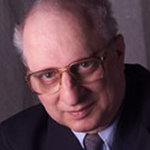April 27, 2014
The Health Centre Model of Care
The old fashioned model of medical care, still widely practiced, consists of a single family physician practicing solo. The pattern is now shifting to other arrangements, such as a group of physicians working jointly, with varying degrees of integration and sharing of staff and resources. In 1970, Quebec's Castonguay-Nepveu Commission called for a province-wide rollout of centres locaux des services communautaires-local centres of community services. These centres were to be part of a web of health and social services, they being the front line, providers of primary care. In addition to physicians, the centres wee to employ nurses, social workers, psychologists, and other health professionals, and the focus was to be one of social medicine. It was an effort to move away from a medical model of care to a more holistic approach.
This same kind of orientation exists in other places, such as in the community health centres in Ontario. In spite of the proven accomplishments of such programs—for example, they have shown to reduce the amount of hospitalization—they have not been given the necessary resources to expand to new locations.
On March 20, Kelly Robinson, a social worker and the Primary Health Care Manager of Rideau Community Health Care Services, spoke about her centre’s approach, in a presentation in Ottawa to SWAG (Social Workers and Gerontology). Her centre functions in Smiths Falls, a place facing serious social problems: loss of major employers and a loss of physician services due to death. The centre faced the situation of having to serve a population of what have been termed orphan patients (no doctor). Many were marginalized and facing multiple barriers. People needed to believe that they were being seen and heard and that they were of worth. Many were older people with complex health challenges.
The centre is multi-disciplinary. Facing the immediate heavy demand for services from a large orphan population, the centre opted to initiate client enrolment in group visits. These provided peer support and promoted community building. The emphasis was on a model of client responsibility.
Intake group meetings met the registration problem. Group services have been useful in dealing with many of the challenges and problems facing the clientele: anxiety, grief, depression, stress, housing crises, loss of income, disability, and caregiver stress.
Services in the centre are provided by the appropriate staff person. Often that person is not a physician, and in fact physician services need to be rationed because of the heavy demand. The approach has provided a good level of integrated service. Yet, there are barriers to integration in such a centre.
“Integration is not the same as being under one roof,” she explained. The staff members need to be prepared to cooperate in such arrangements, and “Some primary care providers are unwilling to let go.” The old medical model of the physician in charge gets in the way. As well, many physicians lack an awareness of what social workers can do. There are competing professional interests. She cited as an example a situation where a physician is dealing with a suicidal patient rather than referring to a social worker. While it is seen in holistic health care for a physician to engage in this way, the shortage of physicians available and the heavy press of demands for physician services means that the centre cannot afford such an allocation of his time.
“True integration” means that the right service provider is engaged with the particular client at the right time. Intake refers appropriately, and service providers re-refer when indicated. The facility needs to be geographically accessible. Group work is a tool used for self-management groups and for peer support. Group medical visits may be disease-specific, for example for diabetes care, or general. And because the centre cannot do everything there needs to be partnership with external resources. The centre itself has a community board so that it is appropriately addressing community needs.
Turning to the Quebec model, it appears that there is some slippage from the original Castonguay-Nepveu approach. Community development work is being curtailed. In the centre where I receive service there are no physicians on staff. Two visit once a week, and some simple activities fall to them rather than to a nurse or other staff person. I needed a referral for a hearing test, but that piece a paper needed to be issued by a physician, after an appointment was arranged some weeks later.
Both in Quebec and Ontario, government is trying to address health needs by encouraging such things as more joint practices. Yet, they already have an appropriate model with the community health centres and local centres of community services. Tommy Douglas commented after Saskatchewan succeeded in bringing medicare into existence that this was just the first phase. More challenging yet would be the creation of the kind of health provision involved in the kind of centres described here. Governments continue to be reluctant to press ahead on community models.








